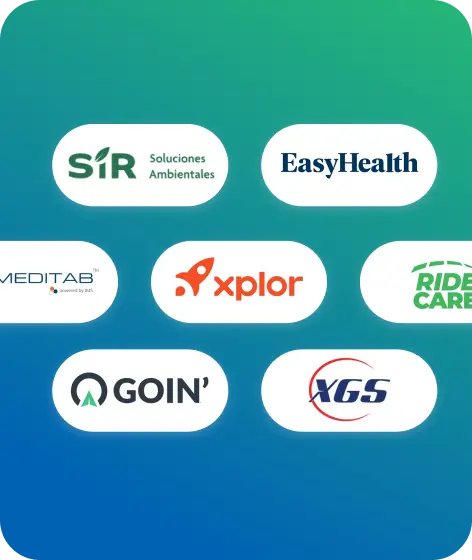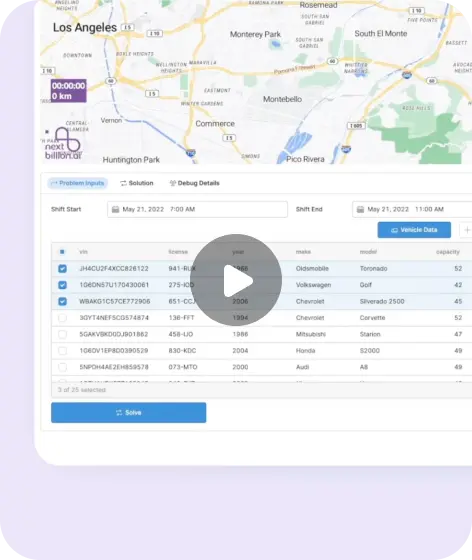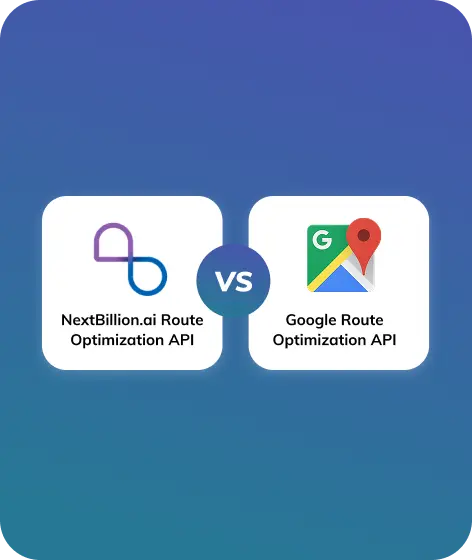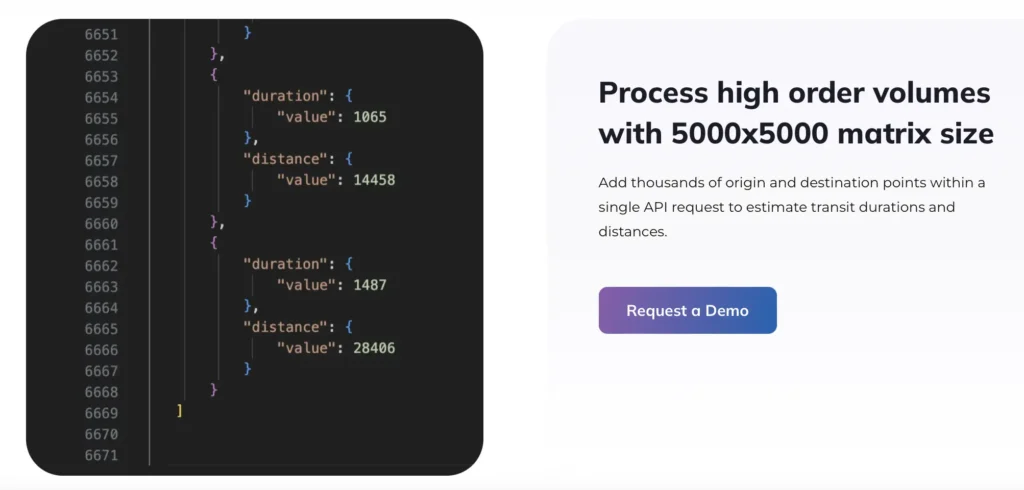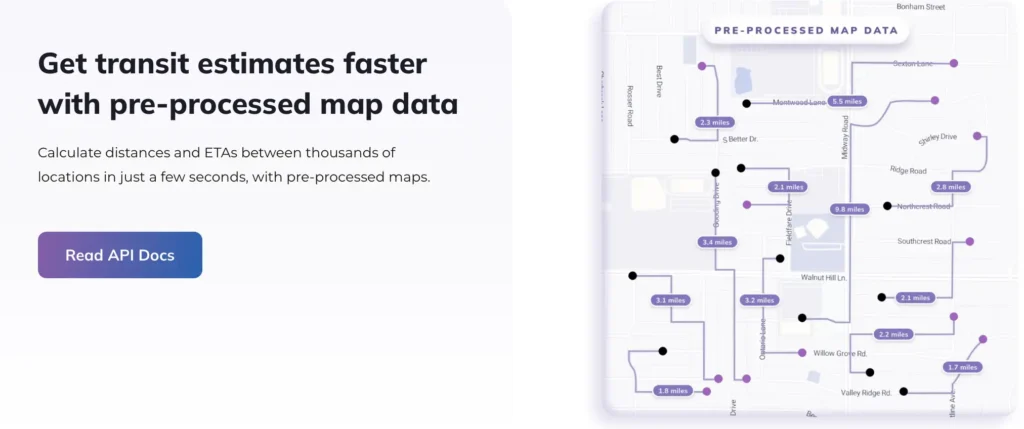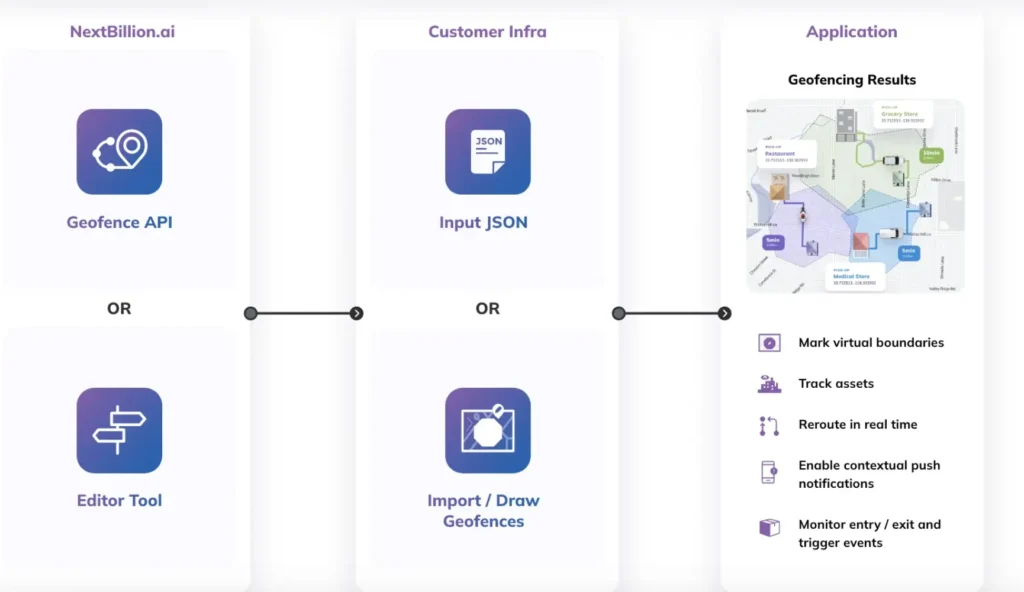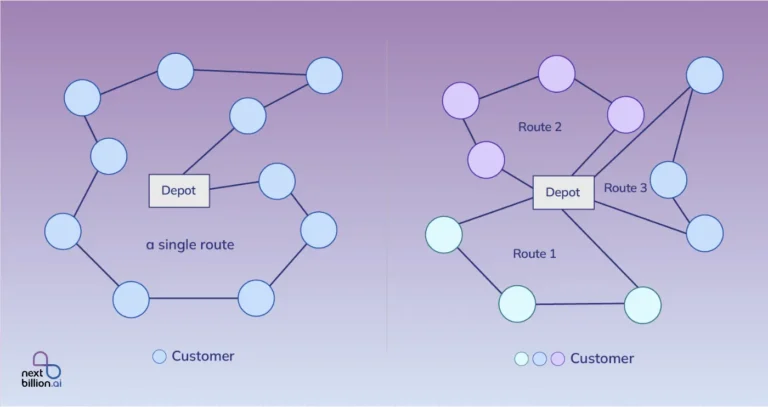
Table of Contents
Ambulance Dispatch Routes for Emergency Care refer to the optimized pathways that emergency medical services (EMS) use to transport patients quickly and efficiently from the scene of an emergency to a hospital or medical facility. These routes are planned in real-time based on factors such as traffic conditions, road infrastructure, the availability of ambulances, and the severity of the patient’s condition. Advanced technologies like GPS navigation, AI-powered route optimization, and predictive analytics help dispatchers select the fastest and safest routes to reduce response times. Efficient ambulance dispatching ensures that critical patients receive timely medical attention, improving survival rates and overall healthcare system efficiency.

Optimizing Ambulance Routing for Efficient Emergency Medical Services
Ambulance routing is a crucial strategic decision that significantly impacts the efficiency of healthcare systems. While the benefits of an intelligent ambulance routing strategy are well recognized, there remains a gap in existing research, as identified through a comprehensive review. The process of determining the optimal route for patient transport is highly dynamic and further complicated by the urgency and severity of medical emergencies. To address this challenge, this research introduces a simulation model designed to optimize ambulance routes by considering multiple ambulances, dispatch locations, and hospitals. The study incorporates real-world hospital admission data to maintain a practical scope and evaluates various levels of patient medical severity to ensure realistic outcomes.
For example, the COVID-19 pandemic underscored the importance of medical resource management during periods of crisis. As healthcare systems faced an overwhelming demand, emergency medical services (EMS) had to optimize patient transportation to provide timely care. Research has highlighted that one of the biggest challenges during such crises is the efficient allocation of resources when systems are under strain. While previous studies have explored hospital operations, administrative workflows, and medical supply chains, there is a noticeable gap in ambulance routing optimization.
The literature recognizes ambulance routing as a key area for improvement within healthcare systems. Effective ambulance dispatch and transport strategies directly impact emergency department (ED) admissions, influencing patient outcomes. Studies indicate that when ambulance response and transport times are excessively long, the likelihood of adverse patient outcomes increases. Therefore, optimizing ambulance routing is critical for improving survival rates and overall healthcare efficiency.
What are the key factors influencing Ambulance Dispatch Routes for Emergency Care?
Ambulance dispatch routes for emergency care are influenced by several key factors that impact response time, patient care, and operational efficiency. These factors include:
- Time Sensitivity: The primary goal is to reach the patient as quickly as possible. To comply with the Golden hour, which is a faster response time for critical conditions such as stroke, cardiac arrest, trauma, etc.
- Location and Accessibility: Real-time traffic data is crucial for avoiding congestion. Condition of roads, construction zones, and accident-prone areas affect route choices. Rural regions may have fewer hospitals and longer travel distances.
- Mapping and Routing Technology: GPS system that provides the fastest and most efficient route options. AI-based solutions like NextBillion.ai, Google Maps, and Onfleet help optimize dispatching. Adjusting routes in real-time based on road conditions, weather, and traffic updates.
- Hospital and Facility Availability: Some emergencies require transport to specialized centers (e.g., trauma centers, stroke units). Also, availability of ICU beds, specialists, and equipment affects the decision. Some hospitals may be at full capacity, requiring ambulances to reroute.
- Communication and Coordination: Due to integration with 911, CAD (Computer-Aided Dispatch), and EMS coordination centers, communication between dispatchers, paramedics, and hospitals helps streamline response. Collaboration with fire departments, police, and traffic management teams may assist.
- Type and Severity of Emergency: A cardiac arrest case may require a different hospital than a burn victim. Some cases may even require ventilators, neonatal incubators, or advanced cardiac care.
- Weather and Environmental Conditions: Extreme weather such as snow, rain, fog, and storms impact driving conditions. Natural disasters such as earthquakes, floods, and wildfires may block or alter available routes.
- Legal and Regulatory Constraints – Traffic Laws and Right of Way: Emergency vehicles usually have priority, but traffic control measures would still apply. Transporting patients across state or country borders may require additional approvals: Standards for transporting certain patients, like isolation cases must be followed.
- Historical Data and Predictive Analytics: Identifying high risk locations with frequent emergencies or accidents. Predicting demand and planning optimal standby locations for ambulances. AI-driven insights help optimize route planning and reduce delays.
- Paramedic and Vehicle Readiness: Closest available ambulance with the right equipment and trained personnel is dispatched. Ensuring ambulances are well-maintained and operational. Adequate staff coverage for emergency shifts.
Emergency medical service providers must balance response time efficiency with infection control measures during pandemics. Some studies have examined the benefits of designating ambulances specifically for infectious disease cases to reduce transmission risks among EMS personnel and patients. While this approach has been tested in specific scenarios, its effectiveness varies depending on regional factors such as call volume and population density.
Optimizing ambulance dispatch policies requires structured decision-making models. Research has explored the use of Markov decision processes and priority-based dispatch strategies to allocate ambulances based on severity and availability. While these models offer a structured approach, real-world implementation may require adjustments to account for varying patient conditions and operational constraints.
Other studies have investigated scheduling and routing challenges in home healthcare, highlighting the impact of patient time windows and logistical dependencies. Simulation models can provide healthcare managers with valuable insights into cost reduction, service level improvements, and operational efficiency.
The impact of increased emergency call volumes on ambulance services has also been studied in regions experiencing high seasonal demand, such as during major public events. Research has examined real-time ambulance dispatching and relocation strategies, employing metaheuristic approaches to optimize coverage during peak demand periods. While these findings are applicable across different healthcare systems, further studies are needed to incorporate additional variables such as travel time, service duration, and call frequency.
Recent research has also explored sustainability considerations in ambulance routing, incorporating factors such as transportation costs and emissions. The broader concept of ambulance routing optimization encompasses various methodologies aimed at enhancing EMS efficiency. The fundamental goal remains to manage ambulance operations impartially and effectively, ensuring timely medical intervention while addressing logistical and ethical constraints.
By integrating insights from multiple studies, this research contributes to the ongoing effort to improve ambulance routing strategies. Future work should focus on refining these models using real-world data, enhancing their applicability across diverse healthcare settings.
How AI helps in Optimising Ambulance Dispatch Routes for Emergency Care?
Emergency medical services (EMS) play a critical role in saving lives by ensuring rapid response and efficient patient transport to healthcare facilities. One of the most crucial aspects of EMS operations is optimizing ambulance dispatch routes to minimize response times. With increasing urbanization, traffic congestion, and unpredictable emergency demands, traditional route planning methods often fail to deliver optimal results. Artificial intelligence (AI) is emerging as a game-changing solution, enhancing decision-making and efficiency in ambulance dispatch systems. This article explores how AI-powered optimization techniques improve ambulance dispatch and routing, ultimately enhancing emergency care outcomes.
Challenges in Traditional Ambulance Dispatching
Traditional ambulance dispatch systems rely on predefined routes, historical data, and manual decision-making. While these methods have been effective to some extent, they present few challenges such as:
- Traffic Congestion: Fixed route planning does not account for real-time traffic conditions, leading to delays in reaching patients.
- Dynamic Emergency Scenarios: Emergency demand is unpredictable, and static dispatch systems struggle to allocate ambulances efficiently.
- Suboptimal Resource Utilization: Ambulances are not always deployed in the most efficient manner, leading to longer wait times and inefficient coverage.
- Limited Predictive Capabilities: Manual systems lack the ability to predict demand patterns, which results in uneven ambulance distribution.
The Role of AI in Ambulance Dispatch Optimization
AI-powered systems leverage machine learning (ML), real-time data analytics, and predictive modeling to enhance ambulance dispatch efficiency. These systems incorporate various AI-driven techniques to optimize response times and resource allocation.
Real-Time Route Optimization
AI integrates with GPS and traffic monitoring systems to provide real-time updates on road conditions. Algorithms analyze live traffic data and dynamically adjust ambulance routes to avoid congestion, ensuring the shortest and fastest route to the emergency site.
Predictive Analytics for Demand Forecasting
Machine learning models analyze historical emergency call data, weather patterns, and population density to predict peak demand hours and high-risk areas. By forecasting where emergencies are likely to occur, AI helps EMS providers strategically position ambulances in anticipation of demand.
Automated Dispatching and Allocation
AI-powered dispatch systems use intelligent algorithms to assign the nearest available ambulance based on response time estimates, hospital availability, and patient condition. This minimizes delays and ensures optimal resource utilization.
Integration with IoT and Smart City Infrastructure
The Internet of Things (IoT) enables ambulances to be equipped with smart devices that communicate with traffic signals and emergency departments. AI processes this data to coordinate priority access through intersections, automatically adjusting traffic lights to create a clear path for ambulances.
Enhanced Patient Prioritization and Triage
AI-assisted decision support systems analyze patient information, including vital signs and medical history, to determine the severity of each case. By integrating with emergency dispatch software, AI prioritizes cases requiring urgent intervention, reducing unnecessary delays.
Future Trends in AI-Powered Ambulance Dispatch
AI’s role in ambulance dispatch optimization is expected to evolve further with advancements in technology. Key trends shaping the future include:
- Autonomous Ambulances: AI-driven self-driving ambulances could navigate efficiently and reduce reliance on human drivers.
- 5G-Enabled Emergency Communication: Faster data transmission will improve AI’s ability to process real-time emergency information.
- AI-Integrated Hospital Coordination: Smart hospital networks will use AI to prepare emergency departments for incoming patients, reducing admission delays.
- Drone-Assisted Emergency Response: AI-controlled drones may be deployed for rapid assessment and delivery of critical medical supplies before an ambulance arrives.
How NextBillion.ai Can Optimize Ambulance Dispatch Routes
NextBillion.ai provides a suite of advanced mapping and AI-driven APIs that significantly enhance ambulance dispatch route optimization. By leveraging these APIs, EMS providers can reduce response times and improve emergency care efficiency.
1. Route Optimization API
NextBillion.ai’s Route Optimization API offers highly customizable route planning capabilities. EMS providers can use this API to:
- Compute the fastest route based on real-time traffic conditions.
- Consider multiple waypoints for better route efficiency.
- Account for road restrictions, elevation, and historical traffic patterns.
- Optimize routes based on emergency priorities for faster response.
2. Distance Matrix API
NextBillion.ai’s Distance Matrix API helps EMS providers determine the shortest travel time between multiple ambulances and emergency locations. This API enables:
- Fast and accurate distance/time calculations between multiple points.
- Optimal ambulance dispatching by selecting the nearest available vehicle.
- Batch processing of requests for large-scale emergency response planning.
3. Geocoding API
The Geocoding API enables precise location tracking of incidents and hospitals. This ensures:
- Accurate pickup and drop-off locations to minimize navigation errors.
- Address-to-coordinate and reverse geocoding for emergency call locations.
- Integration with hospital databases to provide quick navigation routes.
4. Geofencing API
With the NextBillion.ai’s Geofencing API, EMS providers can create virtual boundaries around high-risk areas, ensuring ambulances are proactively positioned where emergencies are more likely to occur. This API allows for:
- Dynamic monitoring of ambulance movement within critical areas.
- Automated alerts when ambulances enter or leave designated zones.
- Better resource allocation by identifying frequently congested areas.
5. Traffic API
The Traffic API provides real-time and predictive traffic insights, allowing ambulances to reroute dynamically and avoid congested areas. Key features include:
- Live traffic updates for real-time route adjustments.
- Predictive traffic modeling to anticipate road conditions before dispatch.
- Historical traffic data analysis to optimize ambulance positioning in advance.
By integrating these APIs, EMS providers can achieve faster response times, better resource management, and improved patient outcomes. NextBillion.ai’s solutions ensure ambulances navigate efficiently, avoid traffic delays, and reach critical emergencies faster.
Few examples of NextBillion.ai’s Solutions in Ambulance Dispatch Optimization
NextBillion.ai’s mapping and AI-powered APIs can be seamlessly integrated into EMS systems through the following steps:
- Integrating Routing API for Optimal Paths:
- EMS dispatch centers connect the Routing API to dynamically compute the fastest routes based on real-time traffic, road closures, and weather conditions.
- The API enables ambulances to automatically receive updated routes if road conditions change.
- EMS dispatch centers connect the Routing API to dynamically compute the fastest routes based on real-time traffic, road closures, and weather conditions.
- Deploying Matrix API for Nearest Ambulance Selection:
- When an emergency call is received, the Matrix API identifies the closest available ambulance to the patient’s location.
- The API calculates travel time across multiple units and assigns the most efficient vehicle.
- When an emergency call is received, the Matrix API identifies the closest available ambulance to the patient’s location.
- Using Geocoding API for Precise Location Identification:
- EMS operators use Geocoding API to convert address inputs into precise GPS coordinates.
- This ensures ambulances do not waste time searching for the exact emergency location.
- EMS operators use Geocoding API to convert address inputs into precise GPS coordinates.
- Geofencing API for Strategic Ambulance Positioning:
- EMS teams define high-risk zones (e.g., accident-prone areas, hospitals, and urban traffic hotspots) using the Geofencing API.
- Ambulances are dynamically stationed in optimal locations based on historical data and predicted demand.
- EMS teams define high-risk zones (e.g., accident-prone areas, hospitals, and urban traffic hotspots) using the Geofencing API.
- Traffic API for Adaptive Rerouting:
- Traffic API continuously updates ambulances on real-time congestion, allowing for automatic rerouting when traffic conditions change.
- Predictive traffic modeling helps dispatchers make informed decisions in advance.
- Traffic API continuously updates ambulances on real-time congestion, allowing for automatic rerouting when traffic conditions change.
Scenario 1 of NextBillion.ai’s EMS Optimization
A city with a high population density struggled with slow ambulance response times due to traffic congestion and inefficient dispatching.
Solution:
- The city’s EMS integrated NextBillion.ai’s Routing API and Traffic API to provide real-time navigation updates.
- Matrix API was used to allocate ambulances based on the shortest possible arrival time.
Outcome:
- The average response time decreased by 30%, ensuring faster patient care. Traffic congestion delays were reduced, and ambulances reached emergencies more efficiently.
Scenario 2 of NextBillion.ai’s EMS Optimization
A regional healthcare provider faced a surge in emergency calls during a pandemic, leading to inefficient ambulance dispatching and resource allocation.
Solution:
- The Matrix API was implemented to match ambulances with critical patients based on real-time availability.
- The Geocoding API ensured precise location tracking, even in rural areas.
- Geofencing API helped create virtual boundaries for ambulances serving high-risk areas.
Outcome:
- Improved ambulance-to-patient matching efficiency by 40%. Emergency medical services were able to prioritize critical patients with optimized dispatching.
Conclusion
AI is revolutionizing ambulance dispatch and emergency care by providing intelligent, data-driven solutions to optimize response times, resource allocation, and patient outcomes. By leveraging real-time traffic analysis, predictive analytics, and automated dispatching, AI enhances the efficiency and effectiveness of EMS operations. As technology continues to advance, AI-powered emergency response systems will play an even more significant role in saving lives and improving healthcare delivery worldwide.
By leveraging NextBillion.ai’s Routing API, Matrix API, Geocoding API, Geofencing API, and Traffic API, EMS providers can significantly enhance ambulance dispatch efficiency, minimize response times, and improve emergency medical care. These AI-driven solutions offer real-time adaptability, predictive analytics, and intelligent dispatching, making ambulance services more responsive, efficient, and life-saving.
About Author
Prabhavathi Madhusudan
Prabhavathi is a technical writer based in India. She has diverse experience in documentation, spanning more than 10 years with the ability to transform complex concepts into clear, concise, and user-friendly documentation.

